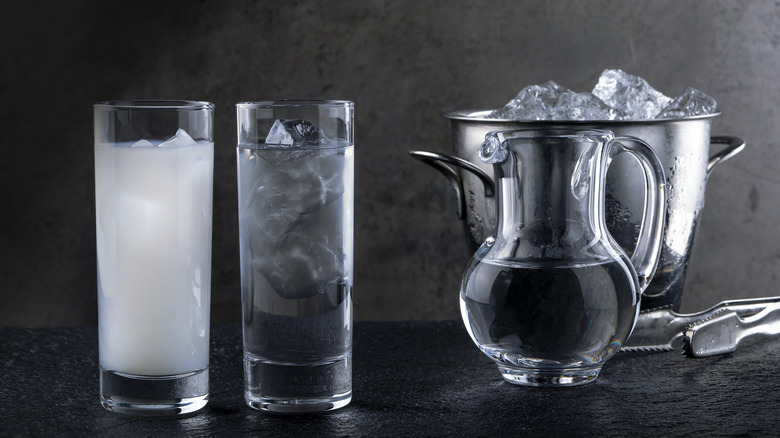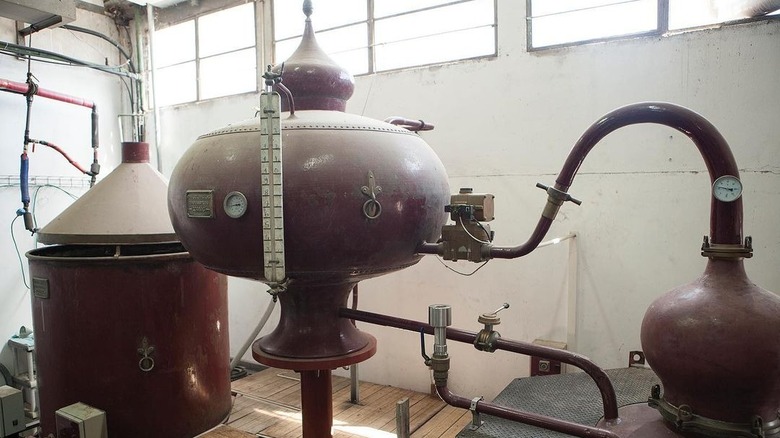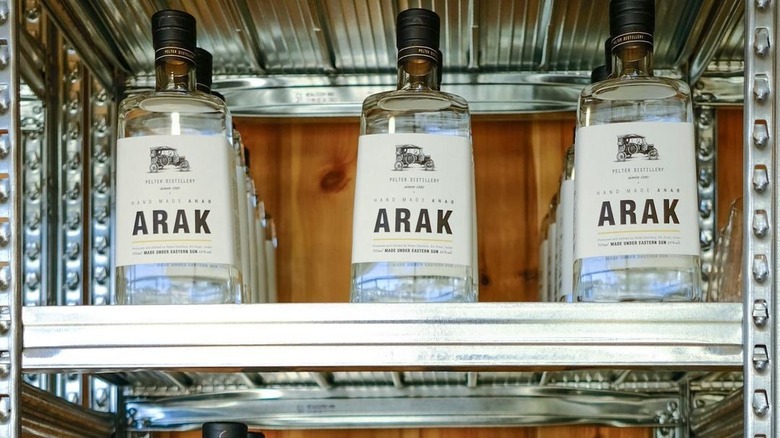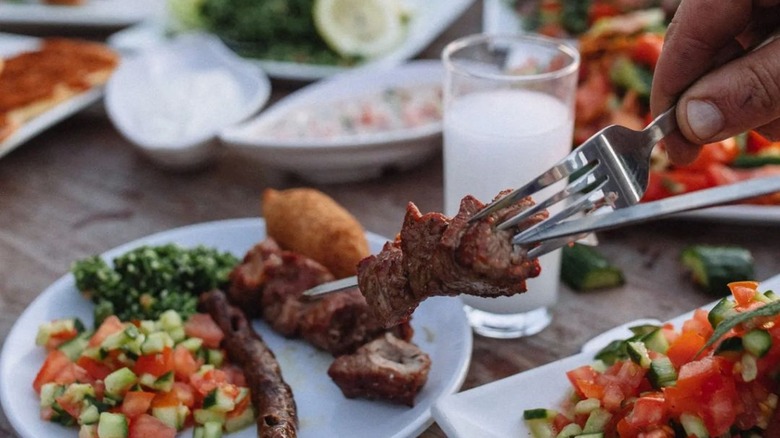What Is Arak, The Trendy Middle Eastern Liquor?
Don't call it a comeback. Arak may be having a resurgence in terms of international interest, but the grape- and anise-flavored spirit has been a staple in Middle Eastern countries for nearly a thousand years, making it one of the world's longest-lived liquors. In fact, its origins are virtually indistinguishable from the invention of liquor itself. When pioneering Arab chemist Jabir ibn Hayyan invented alcohol distillation during the 8th century, the result was a sort of proto-arak made from an alembic still.
Alembic stills are still a feature of arak production in its native region where the drink, with its transparent or milky-white color and licorice-like taste, is as ubiquitous as whiskey in the United States. Once unknown in this country outside of immigrant Arab communities, arak is finally beginning to achieve more widespread popularity, thanks to exports from a new generation of craft producers in traditional arak hotbeds like Israel, Jordan, Lebanon, Palestine, Syria, and Saudia Arabia. The continent of Africa is already a major market for arak, and increasingly consumers in Europe and North America are developing a taste for the ancient spirit as well.
How arak is made and consumed
As is common with brandy, arak is made from grapes that are largely considered unsuitable for winemaking, and which are fermented before being distilled. The resultant spirit is nearly as potent as brandy, too. Araks are commonly distilled and diluted to about 53% alcohol by volume, meaning they're in the neighborhood of 90 to 100 proof.
Arak is made from grape varieties like Obeidy and Merwah, which typically are harvested during the autumn months. The grapes undergo fermentation prior to the distinctive triple-distillation process used for araks, which often take place in regional alembic stills known as karkehs. The first two distillations are aimed at concentrating and purifying the liquor, while the third sees the addition of anise seeds for flavoring.
After a year of aging in clay jugs, arak is bottled and sold. The liquor is not taken straight, however, but like ouzo or absinthe, is served with water. A little arak will be added to a glass, and then topped off from a water pitcher, generally in a two-to-one ratio, with water predominant. As with ouzo – a similar spirit made in Greece — the resultant mixture has a cloudy white color.
Traditional arak producing nations
Although arak has roots throughout the Middle Eastern region, Jordan, Saudi Arabia, Lebanon, Israel, and Syria have emerged as the most important production hubs for the fast-growing international arak market. Yes, the liquor's popularity is growing in the U.S. – although it's still not widely available outside of major cities such as Los Angeles and New York, which not coincidentally are home to large Arab communities.
Arak is becoming more popular with American consumers, however, and not just those in the Arab diaspora. Sales of the liquor, for instance, were forecast to increase by over two billion dollars worldwide between 2021 and 2026. High-profile brands like Muaddi, a Palestinian craft producer, Israel's Kawar, and Lebanese distillers such as Gantous & Abou Raad and Razzouk are leading the charge as arak becomes more commonly consumed around the globe. Benchmark Lebanese wine producers like Chateau Musar and Domaine des Tourelles are also noted for making high-quality arak.
It's no accident that much of the best arak on the market is being produced in Lebanon. Not only is it the national drink, but there's an established appellation system in place there to protect the integrity of the spirit's expression, something no other traditional arak-producing nation can boast. Lebanese brand recognition is also high, which is perhaps not surprising given that a mere 30 or so distilleries are responsible for 90% of the country's overall production.
What does arak taste like?
Because of its use of anise seeds, arak is often compared to other anise-flavored drinks like absinthe, ouzo, raki, pastis, or sambuca. In fact, all these drinks are likely variations of arak that evolved regionally as its popularity spread beyond the Middle East. Each now is associated with an individual country — Switzerland, Greece, Turkey, France, and Italy, respectively — but they reflect one of the world's oldest distilling traditions.
The most common tasting note for all of these liquors is licorice — although it should be noted that there are some important differences between aniseed and licorice. The primary flavor compound for the former is called anethole while the latter has glycyrrhizin. Anethole is responsible for arak's emulsive cloudiness when mixed with water, but it lacks the sweetness associated with glycyrrhizin, which famously produces a flavor markedly sweeter than sugar. Arak's anethole compound, by contrast, has a taste more akin to fennel.
In Lebanon, the liquor is often paired with what's known as mezze, a mix of small dish appetizers featuring cheese, meats, nuts, and olives with other pickled vegetables. Arak, then, is often served as an aperitif — although the drink can be and is enjoyed on a variety of occasions. Increasingly, of course, it's also enjoyed in a variety of countries, including this one.




